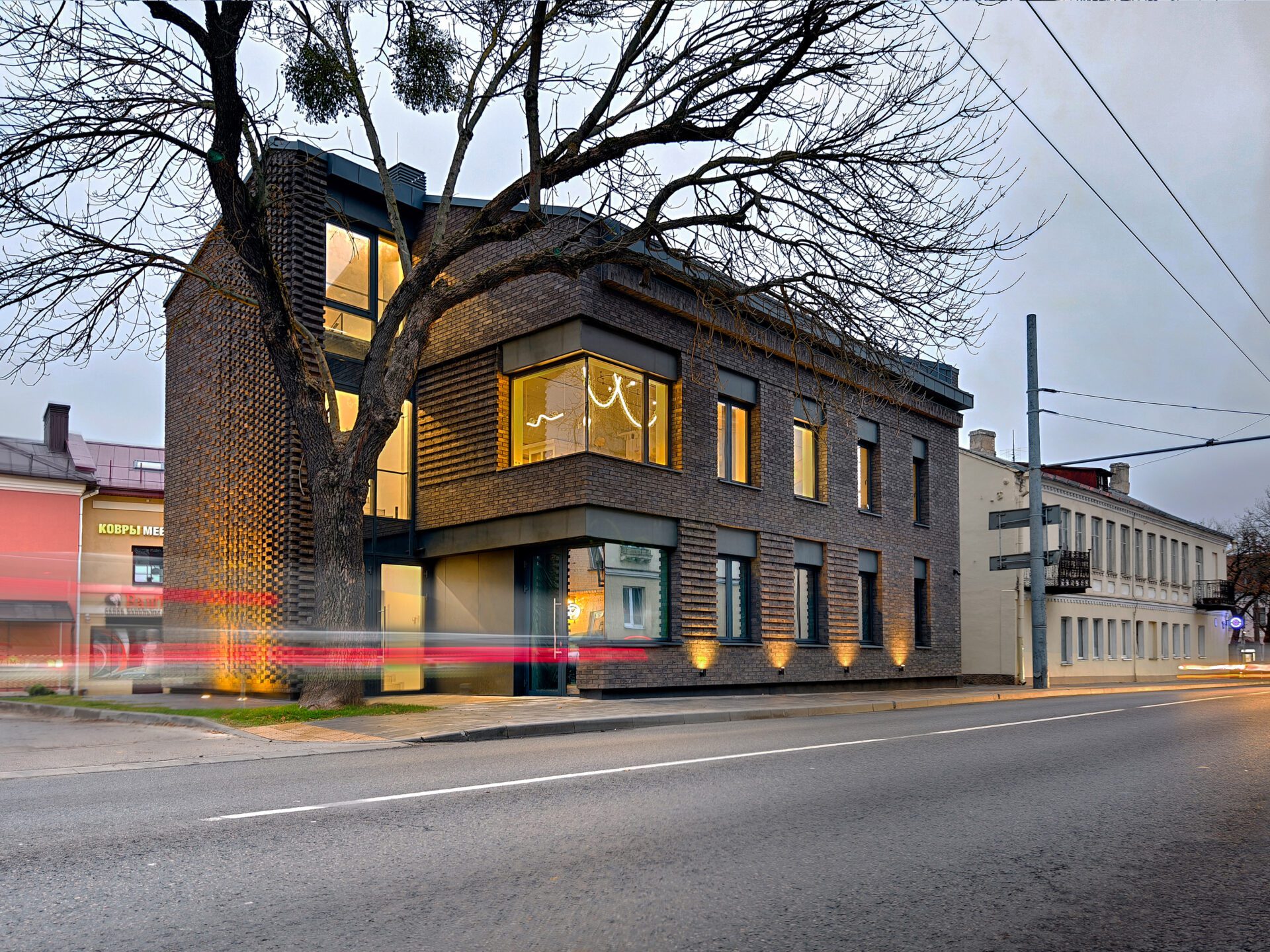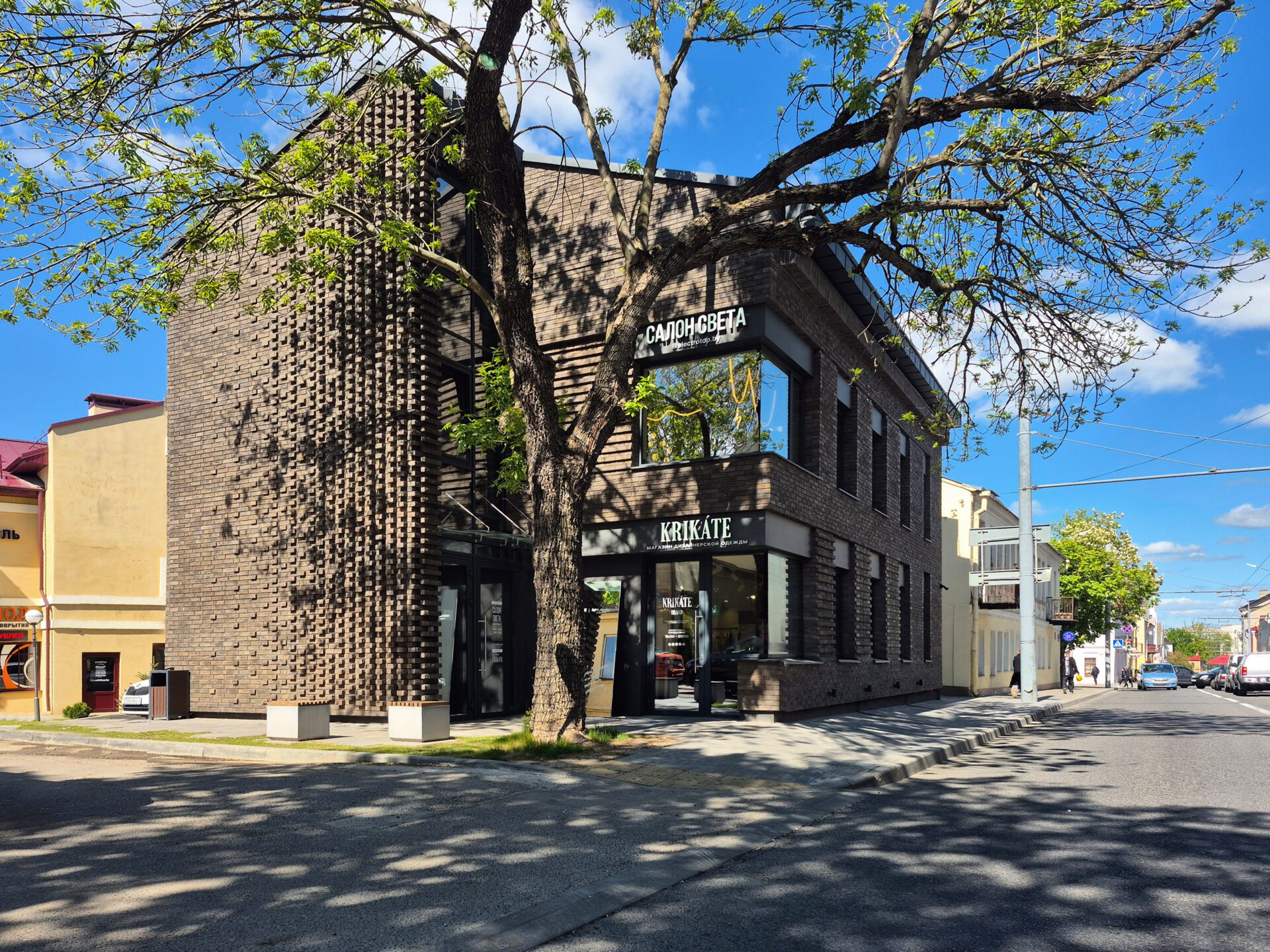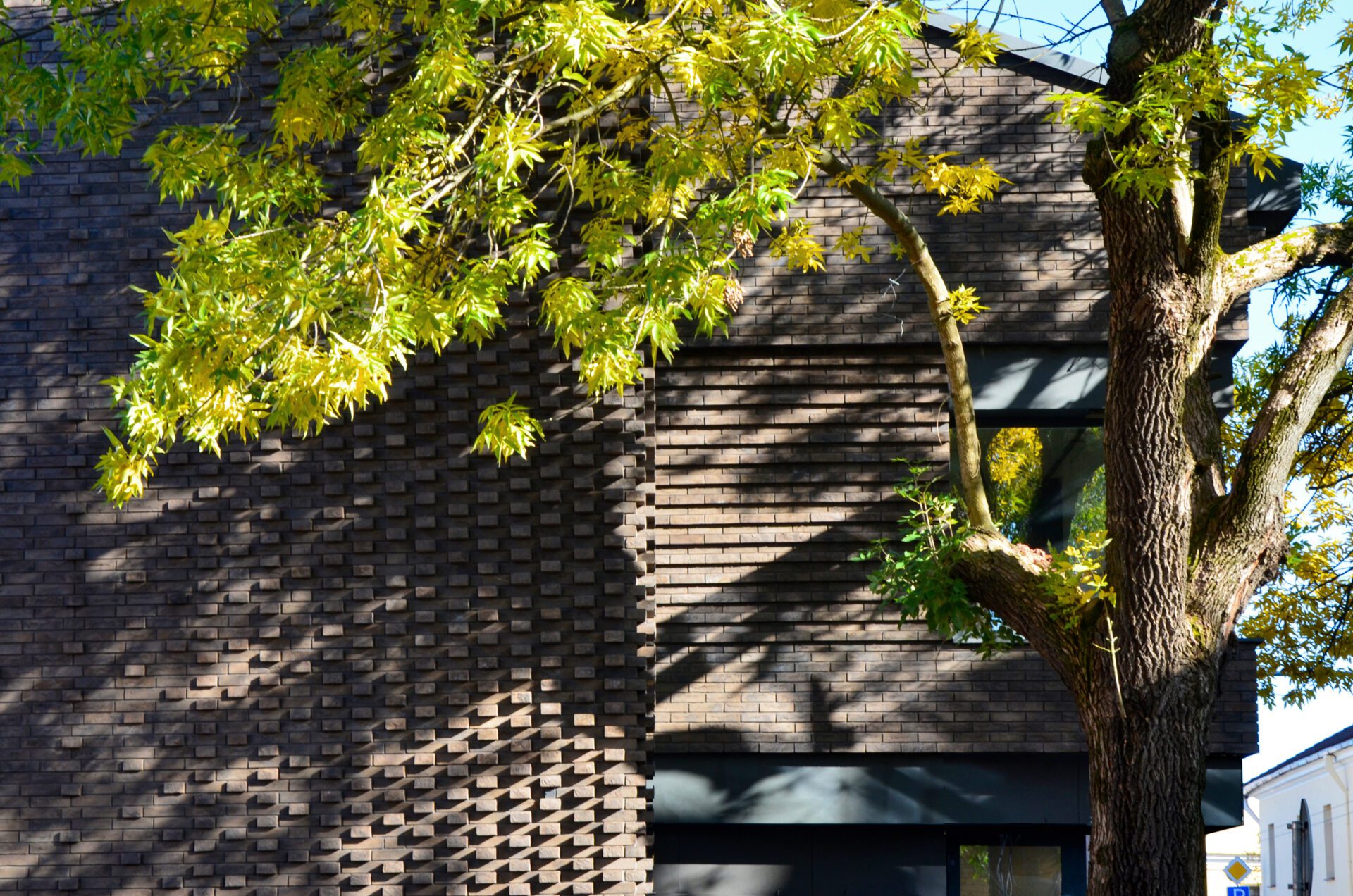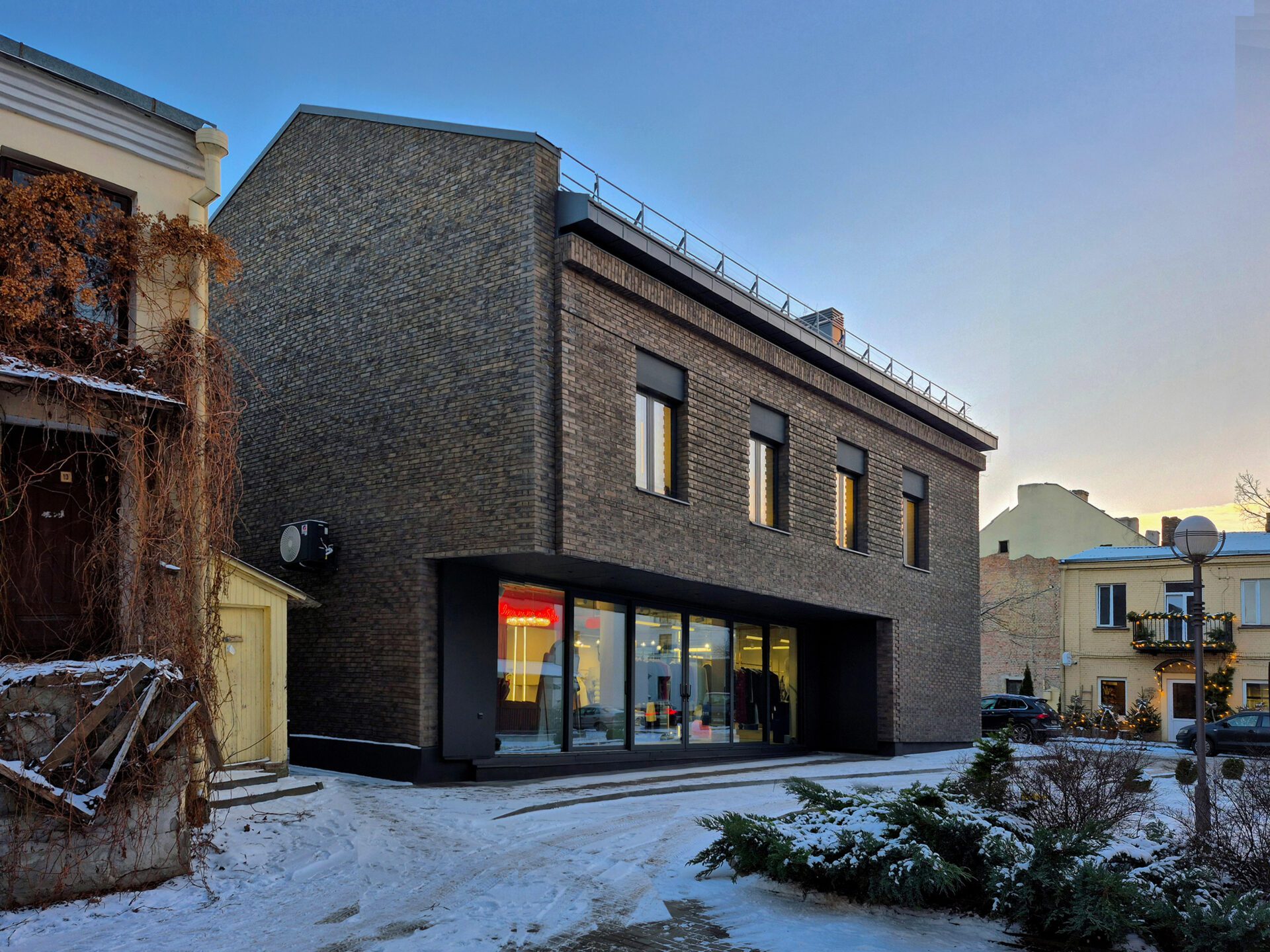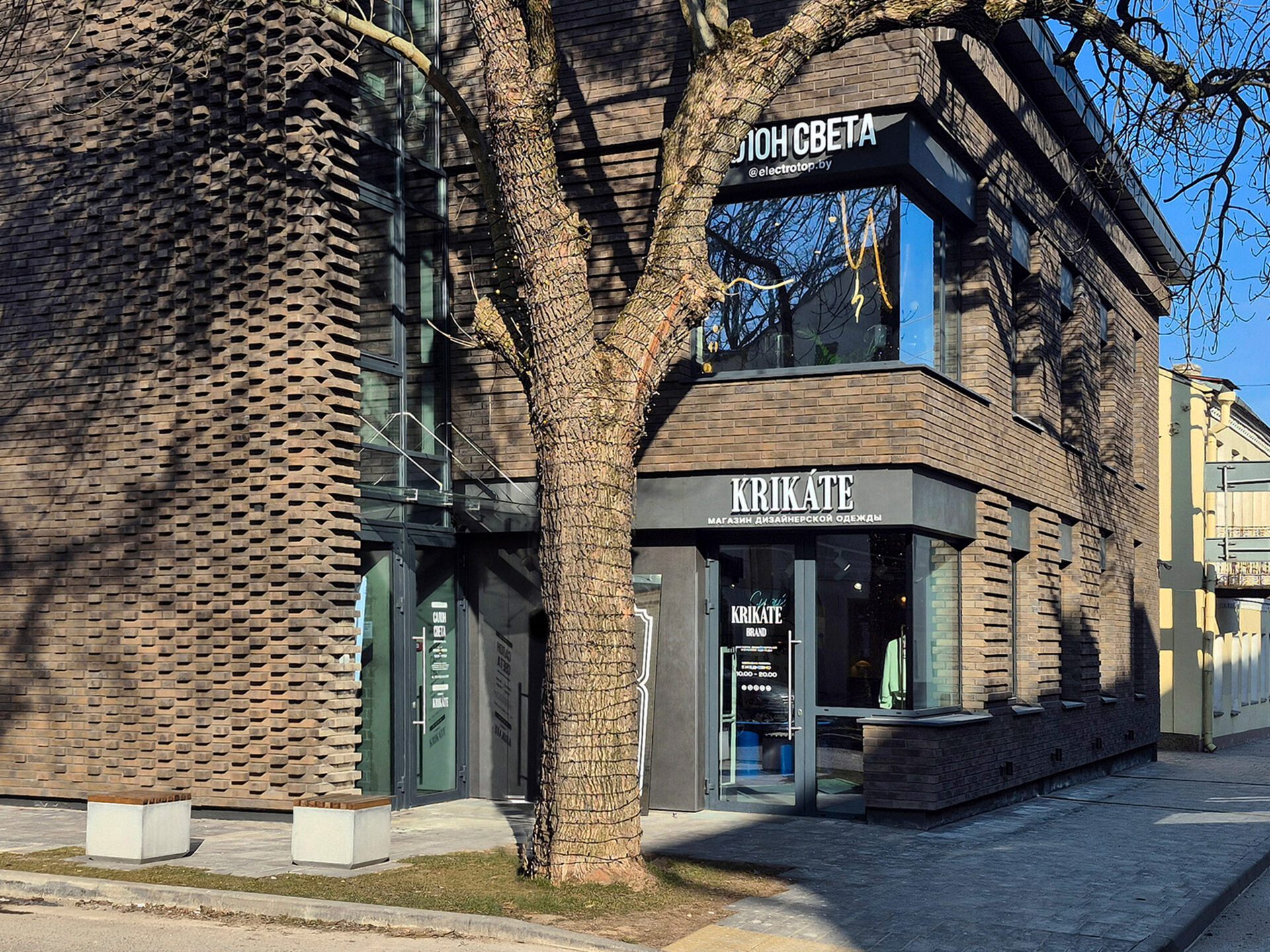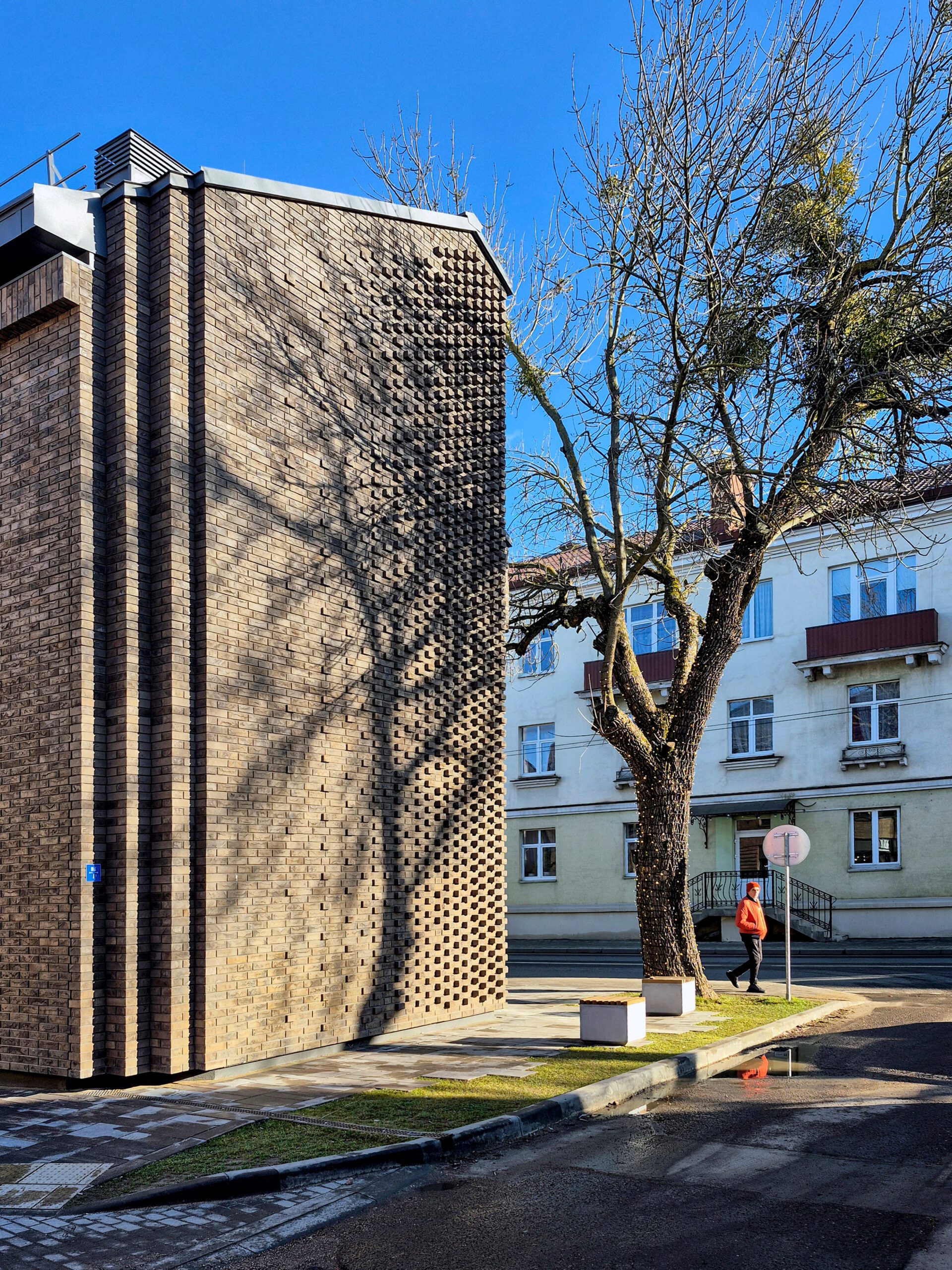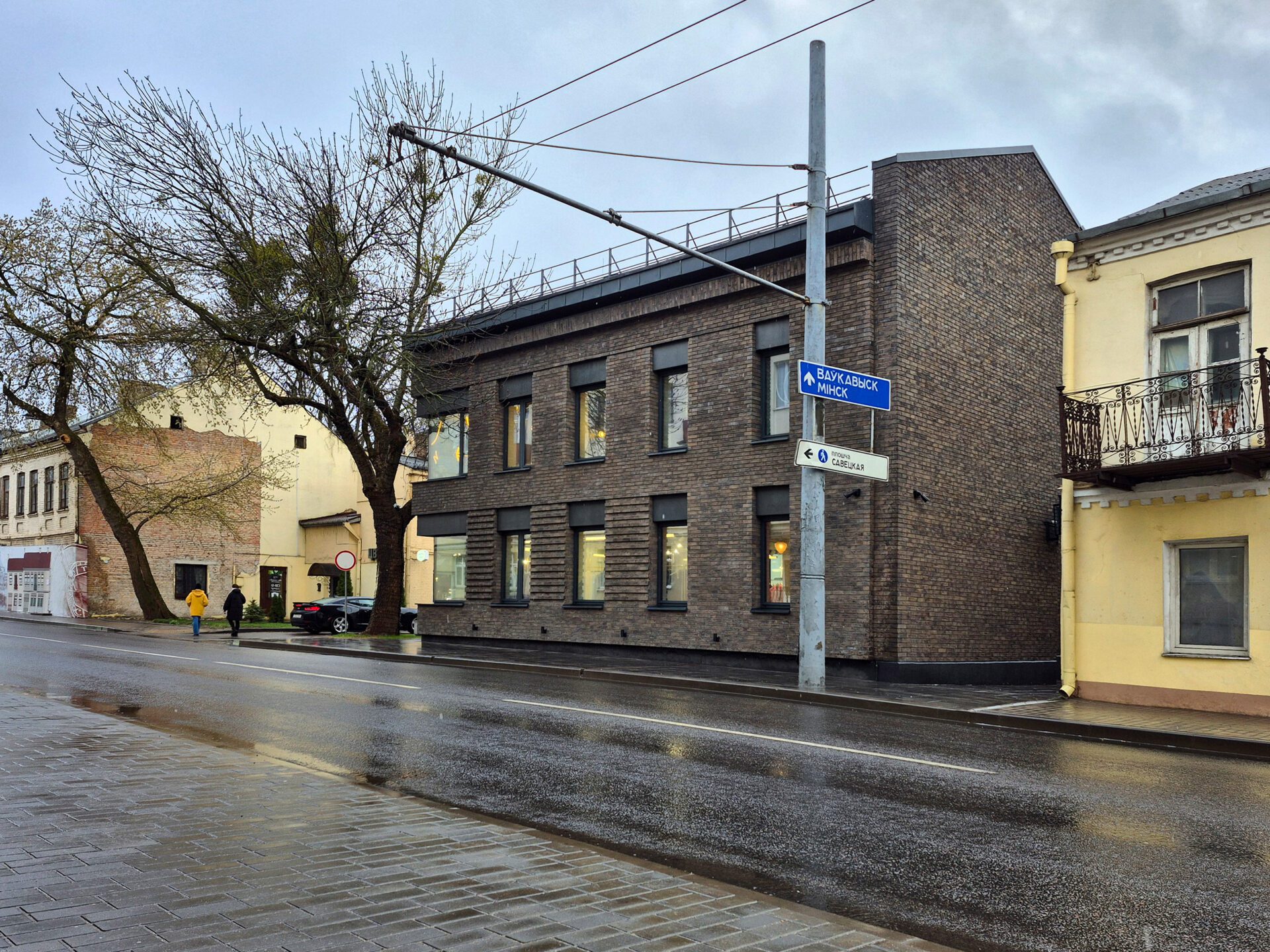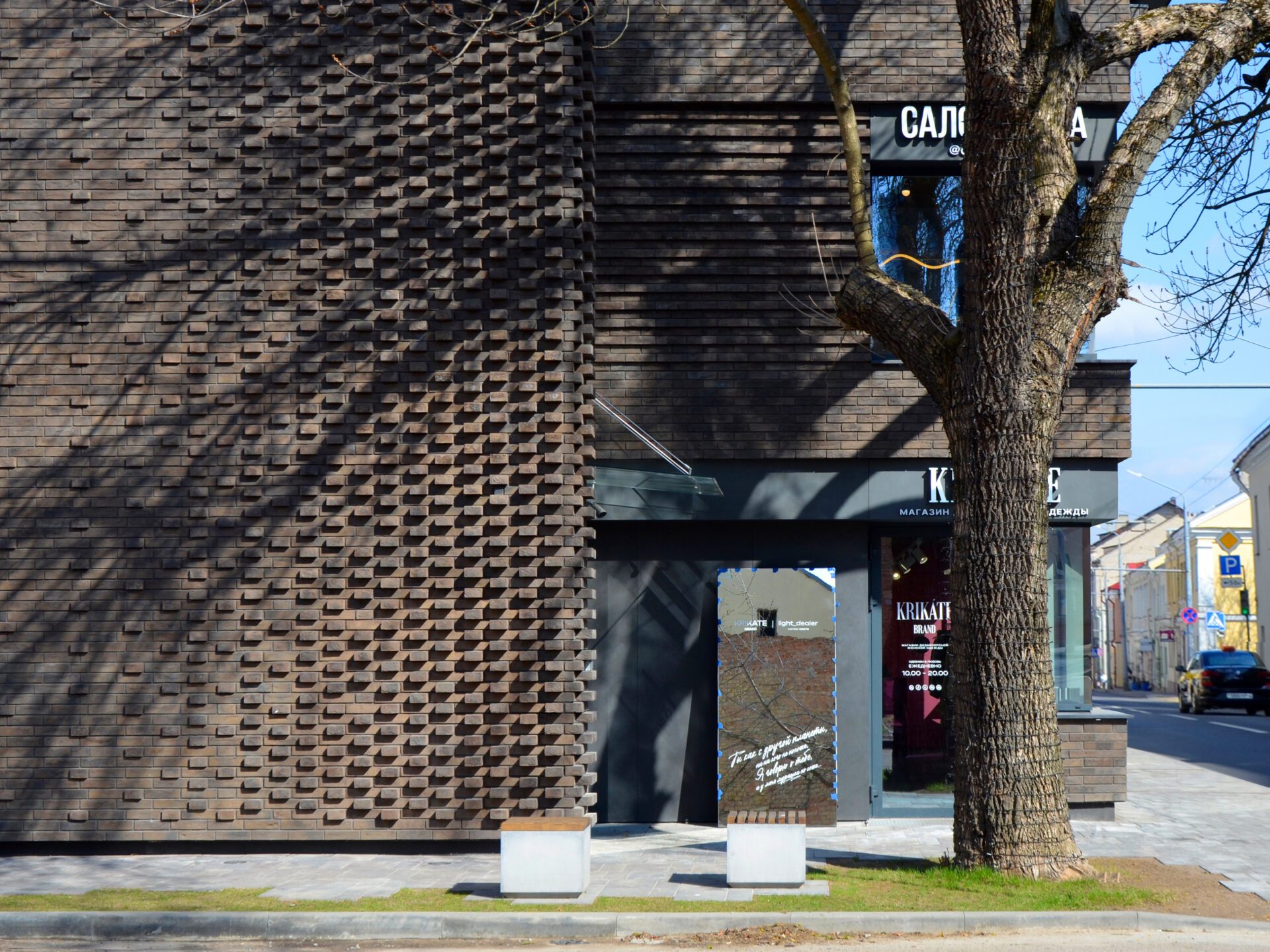TRAECKAYA 25
Intelstock Engineering


Short description
The modern two-storey building with an attic, on B. Troitskaya St., was designed and built on a vacant site in the historical center of Grodno.
Designing any architectural object in the city center is a highly responsible and complex task. Residents are accustomed to perceiving architecture through the lens of heritage, where, alongside historical buildings and background historical structures, creating something new is often not accepted.
The main challenge of the project was to design a contemporary building on a small vacant site, seamlessly integrating it into Grodno’s historic center while preserving the existing tree within the development boundaries.
The building was designed and built in accordance with the height restrictions of the historic center, following the historical modular grid while avoiding stylistic imitation or a pseudo-historical approach. Proportionally aligned with the surrounding buildings, the structure maintains a balance between contemporary architectural solutions and the authenticity of the preserved urban fabric, harmoniously blending into the distinctive environment of the historic center. With respect for the existing historical development, the new building is set back from the historic building line, creating additional pedestrian space and enhancing the urban environment.
The building's concept draws inspiration from the historic brick architecture of the city's central part but reinterpreted in a modern way. It is clad in brick—a traditional material for the "old city." The brick in this project "forms the soul of the building" and allows the building to "communicate" with the surroundings in its own language. The facade, as if alive, changes depending on the lighting. Each side of the building adapts to the urban context, while together they form a single whole. The project utilized handcrafted mineral local brick made from natural raw materials, an eco-friendly product with high physical performance. The unique character of the facade is emphasized by expressive details and intricate brickwork.
The building’s silhouette was shaped with consideration for preserving the tree within the vacant site boundaries. The entrance area was designed beneath the tree’s canopy, creating a natural connection between architecture and nature. Window openings and facade piers vary in size, following an increasing rhythm towards the entrance. Large corner windows open up the interior, allowing it to interact harmoniously with the external environment. A dialogue between the building and the tree emerges through light and shadow, further enhanced by protruding bricks that transform the facade’s appearance. As a result, the existing tree has become an integral part of the composition.
Entry details
